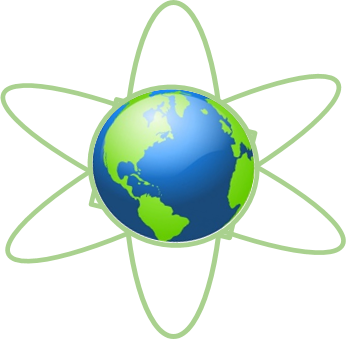ISSN : 2488-8648

International Journal of Basic Science and Technology
Home About IJBST For Authors Issues Useful Downloads Contact
ISSN : 2488-8648

Home About IJBST For Authors Issues Useful Downloads Contact
Questions are asked and these questions need answers. This is the reason why this page is created to enable us share few worries!
×published date:2023-May-21
FULL TEXT in -  | page 65 - 70
| page 65 - 70
Abstract
The problem of potable water deficiency is becoming a global concern. The sixth of the sustainable development goals (SDG) calls for eradicating open defecation and ensuring that everyone has access to clean, affordable drinking water and to also promote sustainable freshwater supply and abstraction as well as to enhance water quality and water usage efficiency. The disinfecting process has been considered one of the most important vital steps in underground water treatment. Ozone (O3) is one of the disinfecting mechanisms used in groundwater to remove microorganisms, inorganic ions, and organic pollutants from underground water samples. This study is therefore focused on the assessment of the efficacy of ozone gas-based sterilization on underground water in a university community of Federal University Oye Ekiti, Ekiti State, Nigeria, and its environs where dependence on underground water is prominent because of lack of access to pipe borne water. O3 was diffused through water samples obtained by grabbed sampling method from different hand-dug wells (HDW1-HDW8) in the community for multiple durations (05, 10, 15, and 20 min), to determine the effectiveness of O3 in eliminating pathogens. Preliminary results showed that the E-coli levels in HDW1-HDW8 range between 28 and 55 cfu per 100ml of water sample. Upon exposure to ozone, the E-coli levels reduced drastically (0-8 cfu) at exposure times of 15- 20 minutes which conforms to the standard stipulated by the WHO (0-3cfu) and NSQDW (0-10cfu). It concluded that the high presence of E-coli in underground water sources in these communities requires proper treatment before consumption to forestall waterborne diseases and death and recommends the use of ozone for its treatment at an exposure rate of 20 minutes. .
Keywords: Underground water, Ozone generator, Pathogens, Oye Ekiti,
References.
Ahmed, E. and Hamid, C. (2018). Advanced oxidation processes (AOPs) for wastewater treatment and Reuse. Journal of Applied science and technology vol. 2(3) pp 18-30
Bayowa O. G, Olorunfemi O. M, Akinluyi O. F and Ademilua O. L. (2014). A further comprehensive approach to assessing the groundwater potential of the basement complex terrain of Ekiti state, southwestern Nigeria. Journal of scientific and technology research Vol 3(7)
Brüssow H. (2005). Phage therapy: the Escherichia coli experience. Microbiology. Reading, England, 151(Pt 7), pp 2133–2140. https://doi.org/10.1099/mic.0.27849-0
Boczkaj, G.and Fernandes, A. (2017). Wastewater treatment by means of advanced oxidation processes at basic pH conditions: a review. Chem. Eng. J. 39 pp 1032-1039
Elizabeth Thursby and Nathalie Juge (2017). Introduction to the human gut microbiota. Biochemical Journal 474 pp 1823–1836. DOI: 10.1042/BCJ20160510
Beltran, F.J., Rivas, F.J.and Montero-de-Espinosa, R. (2005). Iron type catalysts for the ozonation of oxalic acid in water. Water Res. 39 pp 3553–3564, doi:10.1016/j.watres.2005.06.018.
Huang, X. Y. Xu, C. Shan, X. Li, W. Zhang, B. P. (2016). Coupled Cu (II)- EDTA degradation and Cu (II) removal from acidic wastewater by ozonation: performance, products and pathways. Chem. Eng. J. 299 23–29 https://doi.org/10.1016/j.cej.2016.04.044.
Krieg, N.R. and Holt, J.G. (1984) Bergey’s Manual of Systematic Bacteriology. Williams and Wilkins, Baltimore, London.
Price, R.G., and Wildeboer, D. (2017). E. coli as an Indicator of Contamination and Health Risk in Environmental Waters. Int. j.sci 8(3) pp234-246
Rekhate, C.V.and Shrivastava, J.K. (2020). Decolorization of azo dye solution by ozone based advanced oxidation processes: optimization using response surface methodology and neural network, Ozone: Sci. Eng., doi:10.1080/01919512.2020.1714426.
Hoigné J. and. Bader, H (1983). Rate constants of reactions of ozone with organic and inorganic compounds in water- II. Dissociat. Org. Compd. Water Res. 17 pp 185–194 https://doi.org/10.1016/0043-1354(83)90099-4.
Semblante, G.U. Hai, F.I., Dionysiou, D.D., Fukushi, K Priced, W.E.and Nghiema. L.D. (2017): Holistic sludge management through ozonation: a critical review, J. Environ. Manag. 185: pp 79–95 https://doi.org/10.1016/j.jenvman.2016.10.022.
Stephen, T. O. and Kennedy, K. A. (2018). Prevalence of Multidrug-Resistant Escherichia coli Isolated from Drinking Water Sources. International Journal of Microbiology Volume 2, pp 778-785 https://doi.org/10.1155/2018/7204013
Varga, L. and Szigeti, J. (2016). Use of ozone in the dairy industry: a review, Int. J. Dairy Technol. 69 (2) pp 157–168 https://doi.org/10.1111/1471-0307.12302.
Wang, J. and Chen H. (2019). Catalytic ozonation for water and wastewater treatment: recent advances and perspective. Sci. Total Environ 8(3) pp765-778. https://doi.org/10.1016/j.scitotenv.135249.
Wang, J. and Bai, Z. (2017). Fe-based catalysts for heterogeneous catalytic ozonation of emerging contaminants in water and wastewater, Chem. Eng. J. 312 pp 79–98, doi:10.1016/j.cej.2016.11.118.
FULL TEXT in -  | page 65 - 70
| page 65 - 70
Issue 2-Apr-Jun
Issue 1-Jan-Mar
Issue 4-Oct-Dec
Issue 3-Jul-Sep
Issue 2-Apr-Jun
Issue 1-Jan-Mar
Issue 4-Oct-Dec
Issue 3-Jul-Sep
Issue 2-Apr-Jun
Issue 1-Jan-Mar
Issue 4-Oct-Dec
Issue 2-Apr-Jun
Issue 1-Jan-Mar
Issue 4-Oct-Dec
Issue 3-Jul-Sep
Issue 4-Oct-Dec
Issue 2-Apr-Jun
Issue 1-Jan-Mar
Issue 4-Oct-Dec
Issue 3-Jul-Sep
Issue 2-Apr-Jun
Issue 4-Oct-Dec
Issue 1-Jan-Mar
Copyright © International Journal of Basic Science and Technology | Faculty of Science, Federal University Otuoke 2019. All Rights Reserved.
P.M.B. 126, Yenagoa. Bayelsa state Nigeria
Get the most recent updates
and be updated your self...